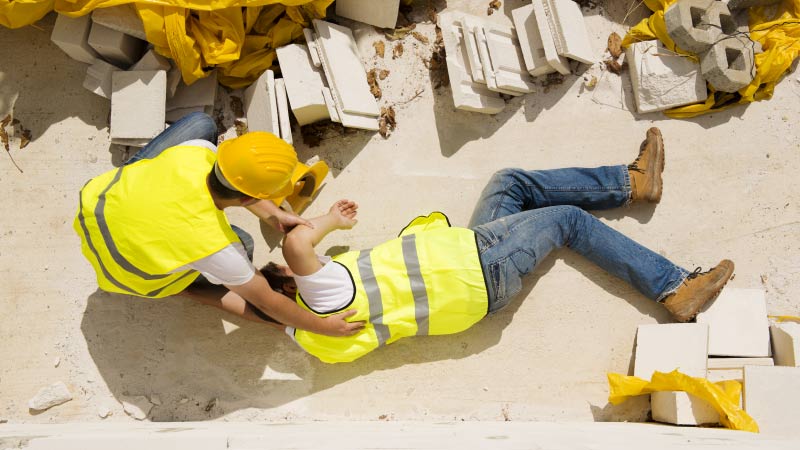
Planning for Safety
According to Australian WHS statistics, there were 191 work-related injury fatalities in 2017. Fifty-five of these fatalities were machinery operators and drivers, and fifty-six were laborers.
According to another statistic, between 2003 and 2016, over 3.400 people lost their lives in work-related accidents. That comes to an average of about 260 people each year from a wide range of industries.
And in this statistic, we can see that work-related injury and disease in the 2012-2013 period cost the Australian economy a whopping $61.8 billion.
It’s clear that we need to take the necessary precautions and make our work environment a safe and healthy place for the sake of our economy and the well-being of as many people as possible.
Now, a lot can be said about safety, but we need concrete plans to ensure that we follow through with our improvements and that they work in the real world.
It All Starts With Understanding Risks and Requirements
The goal is simple:
Prevent anyone from becoming ill or getting injured. Accidents and illnesses can ruin the quality of life of many people, but they can also affect the business negatively in many ways (such, for example, are damaged work equipment, getting sued, or having your insurance cost increase).
Before any safety plans can be made for the workplace, we first need to understand what underlying risks there might be and what the legal requirements are.
Employers and people with authority in the workplace must identify potential hazards and assess the risks to the wellbeing and safety of the workers there.
The first step is to write down the potential hazards and come up with solutions to them. Anything that poses a risk to the workers, customers and visitors must be examined thoroughly.
This would allow you to get a clear picture of the magnitude of the risk or risks and whether further precautions need to be taken to avoid potential problems in the future.
Another facet of work safety is understanding requirements.
Acts outline how to make the workplace safe and healthy. They provide the employer and business owner with the legal responsibilities and duties.
Regulations provide us with the requirements we need to meet for different hazards and risks. These include noise levels, work equipment, ventilation, and more.
Regulating agencies are there to manage the health and safety laws by inspecting workplaces and issuing fines and notices if necessary.
Take the Necessary Precautions
Depending on the work environment, different precautions should be taken to ensure the health and safety of the people there.
Warning, Safety, and Caution Signs
Many work-related accidents can be prevented by simply putting up warning signs. Certain safety hazards may not be completely eliminated, and a safety sign should be used there. Examples include chemicals, flammable gasses, heavy machinery, biological hazards, and electrical devices.
Other times where a safety or caution sign should be used is for wet or slippery walking surfaces or when parts of the building are under repair.
Protective Equipment
Protective equipment is of utmost importance, and they can range from a simple pair of protective goggles to a full body-suit with a respiratory device. Depending on the work environment or particular job, the employer or manager must provide the needed equipment for the workers to keep them safe at the job.
Examples include appropriate footwear, bodysuit, protective goggles, helmet, safety vest, and gloves.
Aside from that, the supervisor or employer must ensure that the workers wear their protective equipment accordingly, especially when dealing with electrical wiring, flying particles, chemical or biological hazards, and other types of irritants.
Sanitation
Proper sanitation is a multifaceted requirement, and it depends on the specific work environment. Good sanitation includes proper disposal of waste that doesn’t lead to work hazards, spills or nature pollution.
Enclosed workplaces and offices must be ventilated accordingly and well-constructed to avoid the entrance of bugs, vermin, and rodents. Toilets must be kept clean with the use of appropriate chemicals that eliminate harmful bacteria. Floors must be kept clean and dry to avoid injuries due to falling or slipping.
If a spill or leak occurs, it must be addressed immediately to avoid work hazards, and the area must be cleaned well and ventilated if gas has leaked previously.
Ensure Good Visibility
The work environment should be kept as clear as possible with good visibility from various points, allowing for an immediate reaction from as many people as possible if something were to happen.
Anything that is not needed for the normal workflow or safety of the workers and managers should be removed from the workplace to ensure as clutter-free environment as possible. This will ensure good visibility, freedom to react quickly, and clear space for emergency help should anyone need it.
Being able to see and react to potential fires, leaks, spills, injuries, and other work hazards is crucial for the safety and wellbeing of everyone in the workplace.






Comments